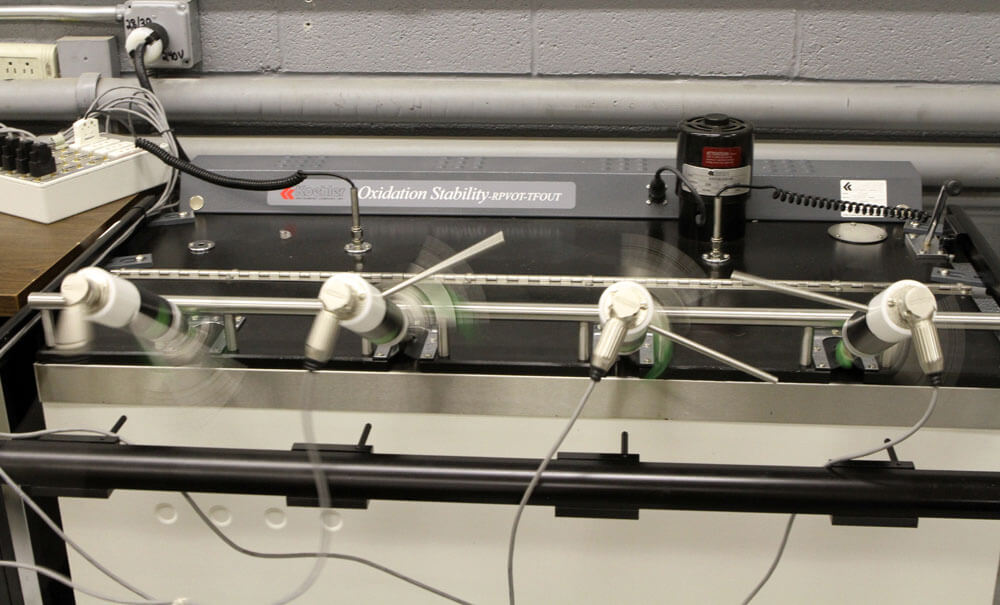RPVOT
The Rotating Pressure Vessel Oxidation Test (RPVOT) is a test that determines the oxidation stability of an oil. RPVOT measures the actual resistance to oil oxidation whereas the other tests detect oxidation that is already present in the oil.
RPVOT is a more proactive approach because you can respond to pending problems before permanent harm is done to the oil or machine. The test is ideal for large oil volumes with low makeup fluid requirements and also severe-duty applications.
The test is very expensive to perform routinely and is usually performed annually on very large oil reservoirs such as a steam turbine where volumes exceed 10,000 gallons.
Results are reported in minutes and are trended against the RPVOT of the new oil. The new oil baseline can be used to convert RPVOT readings to remaining useful life as a percentage of the new oil (100 percent). Typically the caution limit is at 25 percent remaining RPVOT, but this varies by application.
Operating Principle A sample of oil along with water and a copper catalyst is placed in a pressure vessel and pressurized with pure oxygen. Antioxidants present in the oil will act to resist oxidation, but once they have been consumed the oil will begin to react with the oxygen and the pressure in the vessel will drop. The time it takes to reach the specified drop in pressure is recorded and compared to new oil specifications. Results are considered to be in alarm when they drop below 25% of new oil value.
Significance Oxidation is a critical mode of lubricant degradation. As oil oxidizes it forms acids and insoluble oxidation products, which can lead to formation of sludge or varnish. These degradation products can coat bearing and oil cooler surfaces, preventing adequate cooling of the bearings. Areas with tight tolerances such as hydraulic control valves can also become coated causing operational issues.
Applications Mainly used for lubricants with antioxidant additive packages to help monitor fluid health and provide an estimate of remaining life.


